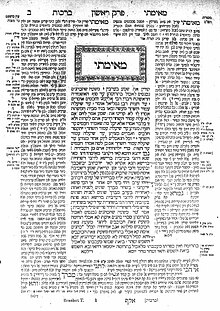

Text annotation is the practice and the result of adding a note or gloss to a text, which may include highlights or underlining, comments, footnotes, tags, and links. Text annotations can include notes written for a reader's private purposes, as well as shared annotations written for the purposes of collaborative writing and editing, commentary, or social reading and sharing. In some fields, text annotation is comparable to metadata insofar as it is added post hoc and provides information about a text without fundamentally altering that original text.[1] Text annotations are sometimes referred to as marginalia, though some reserve this term specifically for hand-written notes made in the margins of books or manuscripts. Annotations have been found to be useful and help to develop knowledge of English literature.
Annotations can be both private and socially shared, including hand-written and information technology-based annotation. Annotations are different than notetaking because annotations must be physically written or added on the actual original piece.[2] This can be writing within the page of a book or highlighting a line, or, if the piece is digital, a comment or saved highlight or underline within the document. For information on annotation of Web content, including images and other non-textual content, see also Web annotation.
- ^ Shabajee, P. and D. Reynolds. "What is Annotation? A Short Review of Annotation and Annotation Systems". ILRT Research Report No. 1053. Institute for Learning & Research Technology. Retrieved March 14, 2012.
- ^ Douglas Fisher (2015). 50 instructional routines to develop content literacy (Third ed.). Boston. ISBN 978-0-13-334796-8. OCLC 857717746.
{{cite book}}: CS1 maint: location missing publisher (link)